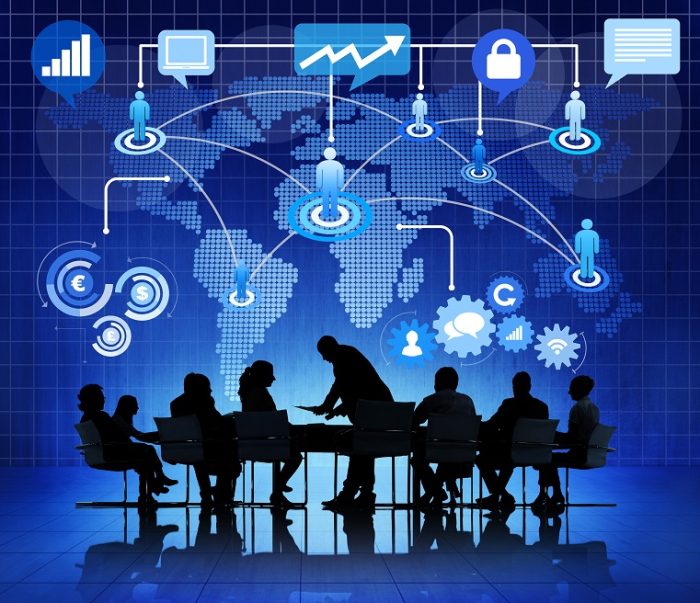
 Data Structure
Data Structure Networking
Networking RDBMS
RDBMS Operating System
Operating System Java
Java MS Excel
MS Excel iOS
iOS HTML
HTML CSS
CSS Android
Android Python
Python C Programming
C Programming C++
C++ C#
C# MongoDB
MongoDB MySQL
MySQL Javascript
Javascript PHP
PHP
- Selected Reading
- UPSC IAS Exams Notes
- Developer's Best Practices
- Questions and Answers
- Effective Resume Writing
- HR Interview Questions
- Computer Glossary
- Who is Who
Emerging Technologies of 2017
Technology is creating a significant impact on our lives. It is opening up opportunities for finding solutions for some of the world’s biggest challenges. Be it the new artificial intelligence technologies, immune engineering which can save the lives of cancer patients, gene editing creating sustainable methods in plants that can tolerate drought and grow resistance to disease, smart- phone applications which aid in navigation, the Tesla Autopilot, or a simple medical app which can store, analyze information and support in real-time, these emerging technologies and facilities such as WiFi are making the world more pervasive with computers and sensors. Companies are investing in software much more than ever, especially via the cloud computing model so as to avail technology at a lower cost and have the service rendered over the internet.
According to research estimates, software spending is expected to increase to $357 billion this year with companies investing over $943 billion in IT services.
Emerging Technologies
Internet of Things (IoT) devices or Internet of Nano things (Nanosensors and Biosensors): Almost 30 billion devices will be connected through the IoT by 2020. In the area of nanotechnology or new sensor technologies – nanosensors which can circulate in the human body or be fixed in construction materials will lead to advancements in medicine, architecture, and agriculture. It is estimated that the wireless sensors market would reach $102 billion by 2018.

Biosensors will make healthcare durable, portable, and reliable leading to continuous monitoring, home diagnostics and reducing costs. The biosensor market is expected to reach $21.64 billion by 2020. Devices will communicate with each other, while apps will use IoT and machine learning together. The total IoT market is expected to grow to $661.74 billion by 2021.
Next generation batteries: Batteries made using sodium, aluminum and zinc could be the answer to removing the biggest barriers in renewable energy where currently the demand exceeds supply. These mini-girds can be powerful enough to light entire villages round the clock providing clean, sustainable and dependable energy.
2D Material: Graphene is the new material that contains a single atom in a layer, while being two dimensional. This is being used in air and water filters to batteries.
Blockchain: The new virtual currency Bitcoin, uses the Blockchain technology. Based on cryptography, this mathematical method can make transactions foolproof especially in real estate and trading of international currencies. New Blockchain apps have been created for financial and the healthcare industry. This market is expected to grow to $2.3 billion by 2021.
Autonomous Vehicles: Tesla leads the path in self-driving/autonomous vehicles which could soon be a reality all over the globe. These would-be ubiquitous vehicles hold the key for change in the lives of handicapped and elderly. They are intended to curb pollution and boost economies.
Organs Growing on Microchips: Used mostly in the medical field, organs could be grown on microchips which allows scientists/researchers/doctors to study and understand the functioning of human anatomy like never before. These organs are the size of a memory stick and hold the key for various advances in medicine, drug development and biological system and activities.
Perovskite Solar Cells: These are the newer definitions of photovoltaic cells over the silicon solar cells for producing solar energy. These are easier to produce, light-weight, manufactured at affordable costs, capable of being used anywhere and can generate power efficiently and effectively on a continuous basis.

Personal AI: Open AI systems will soon make the possibility of a robot with artificial intelligence to communicate with a human, understand and perform the task required. They will be able to advise on decisions related to finances and health. This aid will come via processes such as NLP and social awareness algorithms whose capabilities will be based on huge amounts of data available. As AI is expected to grow to $5.05 billion by 2020, the market for virtual assistants (eg. Siri, Cortana) is expected to reach $12.28 billion by 2024.
Augmented and Virtual Reality: This market will grow to more than $162 billion in 2020. A combination of AI, IoT and VR/AR is known as ‘digital twins’ (a software model). Keeping an eye on IoT, testing and simulating real world scenarios, responding to change and adding value, improving ventures, and analyzing failures along with creation of new products will happen via digital twins. Also, conversations will become easier and such conversational systems/user interfaces will grow to $600 billion by 2020.
Adaptive Security Architecture: Uses the technique of computers protecting themselves with smarter AI tools. Multilayered security and entity behavior analytics will be imperative for all organizations while creating security processes in the early/first phase of designing apps or IoT solutions. It could be a $7.07 billion market by 2021.

Digital Technology Platforms: These are the building blocks of a digital business and usually include IoT, business ecosystems, analytics and intelligence, customer familiarity and information systems.
Optogenetics: Neuroscientists will be soon using light and color to understand the activity of the neurons in the brain with the possibility of light penetrating deep into the brain tissues. This could pave the path for treatment of brain disorders like Parkinson’s as individual neurons could be controlled via an on and off mechanism.
Systems Metabolic Engineering: This technology refers to the progress in systems and synthetic biology and evolutionary engineering to manufacture the building block chemicals at a cheaper cost as it involves using plants instead of fossil fuels.
MASA (Mesh App and Service Architecture): This latest technology in the IoT market will connect IT services and systems through applications which can talk, work, learn, team up and grow. The MASA market is expected to reach $661.74 billion by 2021.
These engineering technologies are bound to make billions. Added to this is their affordability, cost of production, and comfortable to use mechanism making it readily available too. The world should be prepared for them to become mainstream and create a notable effect in the lives of millions.

